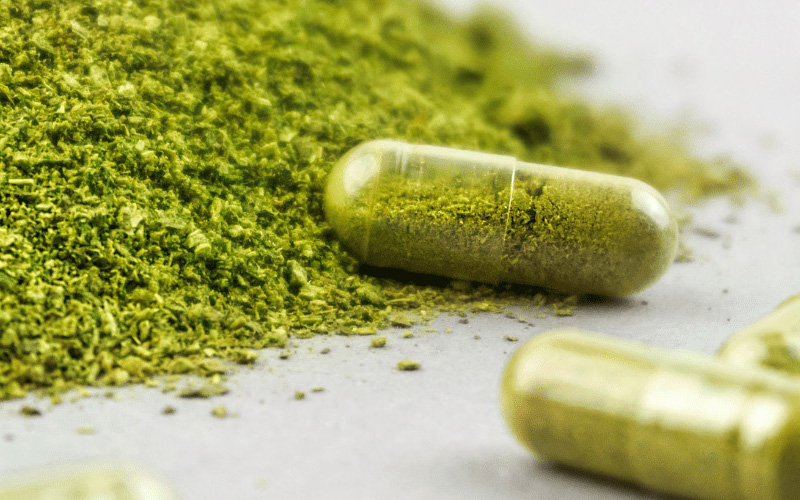Table of Contents
Last Updated on January 19, 2024 by Team Spinfuel

Are you familiar with Kratom? If not, prepare to enter a world shrouded in controversy and debate. Kratom, a tropical tree native to Southeast Asia, has gained significant attention in recent years for its potential benefits as well as its perceived risks.
This unique plant has been used for centuries by indigenous communities for various purposes, but now finds itself at the center of a heated discussion surrounding government regulations and bans.
Is Kratom truly dangerous or is this just another case of interference from authorities? Join us as we explore the fascinating history of Kratom, its potential side effects, and delve into the ongoing debate about its true nature. Get ready to uncover the truth behind this enigmatic botanical substance!
What is Kratom?
What exactly is Kratom? Well, let’s delve into the basics. Kratom, scientifically known as Mitragyna speciosa, is a tropical evergreen tree belonging to the coffee family. It hails from regions like Thailand, Malaysia, Indonesia, and Papua New Guinea.
The leaves of this plant contain active compounds called alkaloids that interact with receptors in our brains. The two primary alkaloids found in Kratom are mitragynine and 7-hydroxymitragynine.
These alkaloids are believed to have both stimulant and sedative effects depending on the dosage consumed.
Kratom leaves can be ingested in various forms such as powder or capsules. Traditionally, they were often chewed or brewed into tea by Southeast Asian communities seeking relief from fatigue and pain.
Due to its potential effects on mood and energy levels, Kratom has gained popularity among individuals looking for an alternative to traditional pharmaceuticals. Some claim it helps alleviate anxiety, depression, chronic pain, and even aids in opiate withdrawal.
However, it’s important to note that while anecdotal evidence supports these claims for some users, scientific research on Kratom’s efficacy remains limited.
The History of Kratom and Its Uses
Kratom, also known as Mitragyna speciosa, has a long history that dates back centuries. Originating from Southeast Asia, specifically countries like Thailand and Malaysia, Kratom has been used for its medicinal properties and cultural significance.
The indigenous people of these regions have traditionally consumed Kratom leaves by chewing them or brewing them into tea. They believed that it provided energy and improved productivity during labor-intensive activities.
It was also used to alleviate pain and help with various ailments such as diarrhea, coughs, and even opium addiction.
Over time, the use of Kratom spread beyond Southeast Asia’s borders. In the 19th century, European explorers recognized its potential therapeutic benefits and introduced it to the Western world.
It gained popularity among researchers who studied its alkaloid compounds such as mitragynine and 7-hydroxymitragynine.
In recent years, Kratom has gained attention for its alleged ability to relieve chronic pain without causing respiratory depression – an adverse effect commonly associated with opioid medications. Some individuals have reported using Kratom to manage conditions like fibromyalgia or arthritis-related discomfort.
However, it is important to note that research on Kratom’s efficacy is still limited in many areas due to legal restrictions imposed by governments around the world.
As a result of concerns about abuse potential and safety issues linked to improper usage or adulterated products containing synthetic additives mixed with natural leaf powder; some countries have banned or regulated this plant substance.
Despite controversies surrounding its legality, numerous anecdotal accounts suggest that responsible use may yield positive outcomes for certain individuals seeking relief from pain or withdrawal symptoms associated with opioids – which makes this topic highly debatable amongst experts in medical science!
Overall, understanding the historical context of Kratom helps shed light on why it holds both promise but also concern within today’s regulatory landscape!
Government Regulations and Bans on Kratom
Kratom, a tropical evergreen tree native to Southeast Asia, has been the subject of much debate and controversy in recent years. While some individuals swear by its potential health benefits, others argue that it poses significant risks. As a result, governments around the world have implemented various regulations and bans on kratom.
In the United States, for example, the Drug Enforcement Administration (DEA) initially proposed classifying kratom as a Schedule I substance in 2016. This would have placed it alongside heroin and LSD in terms of legal classification.
However, intense backlash from advocates who argued for its medicinal uses led to the withdrawal of this proposal.
Despite this setback for proponents of regulation, several states within the US have taken matters into their own hands by banning or regulating kratom at a local level. These actions often stem from concerns over potential misuse or abuse of the substance.
Internationally, countries such as Australia, Thailand, and Malaysia have also enforced strict regulations or outright bans on kratom due to fears surrounding its addictive properties and lack of research regarding long-term effects.
Proponents against government interference argue that these restrictions limit access to potentially beneficial herbal remedies for those suffering from chronic pain or opioid addiction. They assert that proper regulation could facilitate safe usage while addressing any associated risks through education and quality control measures.
On the other hand, government officials advocating for stricter controls contend that without extensive scientific evidence supporting its safety profile, such regulatory measures are necessary to protect public health.
They worry about possible side effects like liver damage, respiratory depression, and even fatal overdoses linked with unregulated use.
In addition, the street market may offer adulterated products which can lead to further harm if consumed unknowingly.
These concerns drive their efforts towards restricting access rather than embracing potential therapeutic applications before more conclusive research is available.
The ongoing battle between those who believe in individual autonomy when it comes to choosing natural remedies versus those who prioritize public safety highlights the complexities of this issue. As research continues and
Possible Risks and Side Effects of Kratom Use
When it comes to any substance, it’s important to consider the potential risks and side effects. While kratom has gained popularity for its alleged benefits, it’s crucial to be aware of the possible drawbacks.
Kratom can have addictive properties. Some individuals who use kratom regularly may develop a dependence on the substance. This means that quitting kratom abruptly could lead to withdrawal symptoms such as irritability, anxiety, insomnia, or even flu-like symptoms.
Moreover, there have been reports linking long-term kratom use with liver damage. Although these cases are relatively rare and more research is needed to establish a definitive connection between kratom and liver problems, it’s worth considering this potential risk.
Another concern is that the purity and quality of commercially available kratom products are not always guaranteed. There have been instances where contaminated or adulterated batches of kratom were found in circulation. These impurities may pose additional health risks when consumed unknowingly.
Additionally, some users have reported experiencing gastrointestinal issues like constipation or stomach discomfort after taking kratom. It’s essential to monitor your body’s response and adjust your dosage accordingly if you experience any adverse effects.
While many people find relief from chronic pain or manage withdrawal symptoms through using kratom responsibly, understanding these potential risks is vital for making informed decisions about its usage.
Remember that everyone reacts differently to substances like kratom – what might work well for one person may not be suitable for another due to individual variations in body chemistry and tolerance levels. As with any supplement or medication, consulting with a healthcare professional before starting or discontinuing the use of kratom is always recommended.
The Debate: Is Kratom Dangerous or Beneficial?
Kratom has become a hot topic of debate in recent years, with proponents and skeptics both presenting compelling arguments. On one hand, advocates argue that kratom can provide pain relief, boost energy levels, and even help in managing opioid addiction.
They believe it is a natural alternative to prescription medications with fewer side effects.
However, there are those who caution against the use of kratom due to its potential risks. Critics point out that kratom can be addictive and may lead to dependence or withdrawal symptoms. They also raise concerns about the lack of regulation and standardization in the production and distribution of kratom products.
Another point of contention is the limited scientific research available on kratom’s long-term effects on health. While some studies suggest potential benefits, others highlight potential dangers such as liver damage or interactions with other substances.
The debate surrounding kratom often centers around balancing individual freedom with public safety. Supporters argue for personal autonomy in choosing natural alternatives for pain management while opponents emphasize the need for government intervention to protect public health.
As more research emerges and regulatory measures are put into place, it will be interesting to see how this debate unfolds. Finding a middle ground that balances individual choice with responsible regulation may be crucial in determining whether kratom is indeed dangerous or beneficial.
Conclusion: The Future of Kratom and Its Legality
As the debate surrounding kratom continues, it is clear that there are differing opinions on its safety and benefits. While some argue that kratom can be a natural alternative to opioids with potential therapeutic effects, others express concerns about its addictive properties and potential for abuse.
Despite these debates, one thing remains certain – government interference has played a significant role in shaping the legality of kratom. The bans and regulations imposed by various countries have made it difficult for users to access this plant.
However, recent developments suggest that there may be hope for the future of kratom. In places like Thailand, where kratom has historically been used as a traditional medicine, efforts are being made to decriminalize its use.
Moreover, advocacy groups and individuals who believe in the medicinal value of kratom continue to fight for its recognition as a legitimate treatment option. They emphasize the need for further research into its potential benefits and risks in order to establish responsible guidelines for consumption.
It is important to note that while there may be risks associated with using kratom irresponsibly or excessively, many proponents believe that when used properly under medical supervision or as part of alternative therapy programs, it can offer relief from pain and aid in managing opioid withdrawal symptoms.
The future remains uncertain; however, continued dialogue between experts, policymakers, researchers, and advocates will play a crucial role in determining whether we see an evolving acceptance towards this botanical substance or if government control prevails.
Ultimately, the decision regarding the legality and regulation of kratom should be based on scientific evidence rather than political agendas alone. By considering all perspectives objectively, you can form your own educated opinion on whether you view kratom as dangerous or potentially beneficial.
Related Articles on Spinfuel
Opioid Drug? FDA Commissioner Scott Gottlieb Calls Kratom and Opioid








